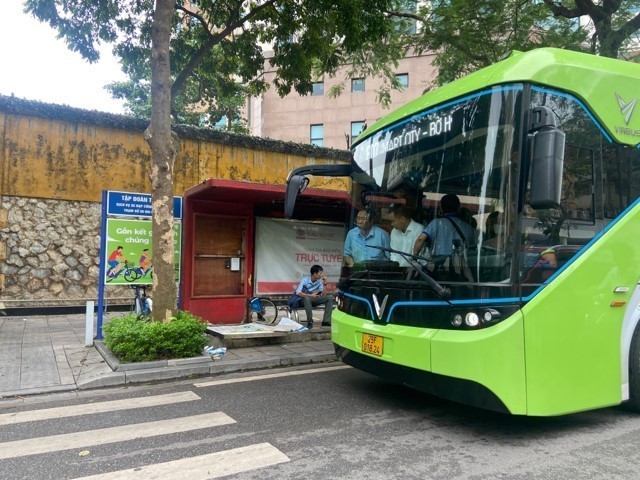 Society
Society

 |
| Bus fares in Hà Nội have been adjusted up from November 1. — VNA//VNS Photo |
HÀ NỘI — Bus fares, applied in Hà Nội since 2014, were adjusted this month with the largest increase reaching 60 per cent.
Many commuters contend that, in light of the fare hikes, service quality needs to improve, but the bus company says the new fares reflect the expanded network.
The city's Public Transport Management Centre claims that the bus ticket prices, which had been subsidised by the city's budget since May 1, 2014, are now outdated.
In 2014, the bus network consisted of 72 routes and branch routes, with the longest route measuring 49.9 km. After ten years, the bus network now includes 132 routes that connect 30 cities, villages and districts, with the longest route spanning 61.05 km.
Charging the same price for routes between 30 and 60 km long is considered inappropriate. The current bus fares are believed to be reasonable, given the commuters' ability to pay, particularly low-wage workers.
The new rates have gone up from VNĐ7,000 to VNĐ8,000 for trips under 15 km and from VNĐ7,000 to VNĐ10,000 for trips between 15 km and less than 25 km.
The fee goes up from VNĐ8,000 to VNĐ12,000 each journey for routes that are 25 km to less than 30 km long.
Prices for trips between 30 km and less than 40 km and 40 km increased from VNĐ9,000 to VNĐ15,000, while trips 40km and longer now cost VNĐ20,000.
The monthly rates have increased by 40 per cent. The monthly ticket for students and industrial park workers commuting on a single route has increased from VNĐ55,000 to VNĐ70,000.
Many Hanoians agreed that the increases were fair but still expected improvements in bus service speed and quality.
Dương Văn Nguyên, a driver on bus route No 74, said the majority of commuters have expressed satisfaction with the revised fares since the new prices were made public.
"On the first day of the new fares, passengers generally found the increase acceptable. It comes as a big surprise to people who haven't updated the information. But no passenger wanted to cancel the trip when they saw the price increase," he told Sức Khỏe&Đời Sống (Health and Life).
Numerous passengers felt that the quality of the buses and services on numerous bus lines should be improved, not just maintained, even though they agreed with the fare increases.
There are reportedly still cases of old vehicles, poorly maintained vehicles stalling on the road, leading to minor breakdowns.
Some vehicles still emit black smoke, and passengers complained that traffic bottlenecks caused delays.
These issues have made public transport passengers feel uncomfortable.
Anh Hào, a student at a university in Đống Đa District, said the fare increases have little effect on those like him who travel short distances.
However, he hopes that the fare increases go hand in hand with improvements in bus service quality, as drivers sometimes speed, brake suddenly, and weave dangerously on the road.
Minh Châu, an office worker in Hai Bà Trưng District said: "Buses are not the regular choice for students and office staff. Many of us want to take buses but they are slower than private cars and ride-hailing services during rush hour.”
Director of the city’s Traffic Management and Operation Centre Thái Hồ Phương said the centre has been working with the Department of Transport and city authorities on ways to expand the bus network's coverage and improve public transport standards.
The department recently adjusted the validity of the free card for meritorious people, people with disabilities and the elderly. Those groups of passengers can now use free bus tickets without an expiration date. — VNS




